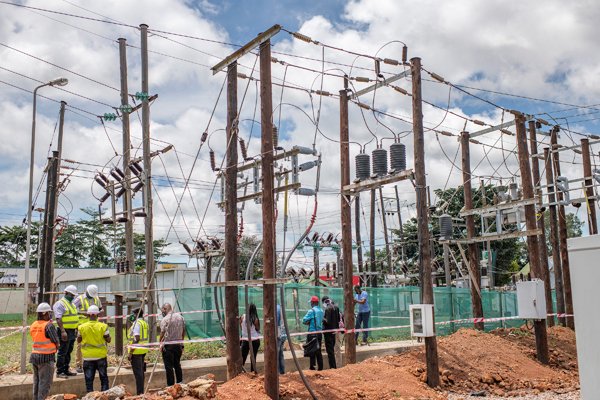Power transmission lines have increased by 121 kilometres in the last one year due to increased investment in the energy sub-sector by both government and the private sector, according to the Ministry of Energy.
Speaking in Kampala during the inaugural energy meeting (makutano) on sustainable energy and economic transformation development in Uganda Minister of State for Energy Sidronius Oplot Okasai, said a lot investment has been in the power sector over last 10 years, resulting into an increase in transmission lines and power generation capacity.
For instance, he said, the transmission network had grown 3110.5 kilometres, consisting of 220kV, 132kV and 66kV lines from 2,989.5 kilometres.
According to the 2020 Uganda Bureau of Statistics Household Survey, access to electricity has improved from 51 per cent in 2019 to 57 per cent, of which 19 per cent is accessed through the national grid while 38 per cent is accessed through off-grid connections.
However, Mr Opolot said, in order to increase economic activity, there is need for larger off-grid connections to power villages and industries (mini-grids).
“Government has taken a multi-dimensional approach to electrify Uganda, deploying both grid and off-grid solutions. This calls for more efforts that combine input from demand and supply side,” he said.
Mr Opolot also noted that investment in generation over the last 15 years has seen installed generation capacity increase 1,268.9 megawatts against on-peak demand of about 736 megawatts.
“This is a more than 10-fold increase from 160 megawatts about a two decades ago. This capacity is poised to increase to just under 2,000 megawatts after the 600 megawatts Karuma Hydropower Plant and other small hydro plants under construction, come on line mid-next year,” he said.
Power generation has been diversified across five different sources, among which include hydro, solar, thermal, cogeneration and biomass.
However, even with the increase in generation capacity, tariffs remain high, which holds back both household and industrial consumption.
During the meeting, Umeme managing director Selestino Babungi, said the high cost of electricity was a result of the abolition of power subsidies in 2012. “To lower tariffs, there is need for the government to provide subsidies,” he said. Additional generation Government, under the Sustainable Energy Development Programme continues to plan for additional generation capacity using hydro, geothermal, wind, solar and nuclear to ensure sustainable supply of electricity.
